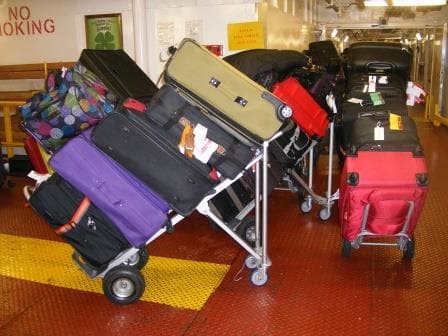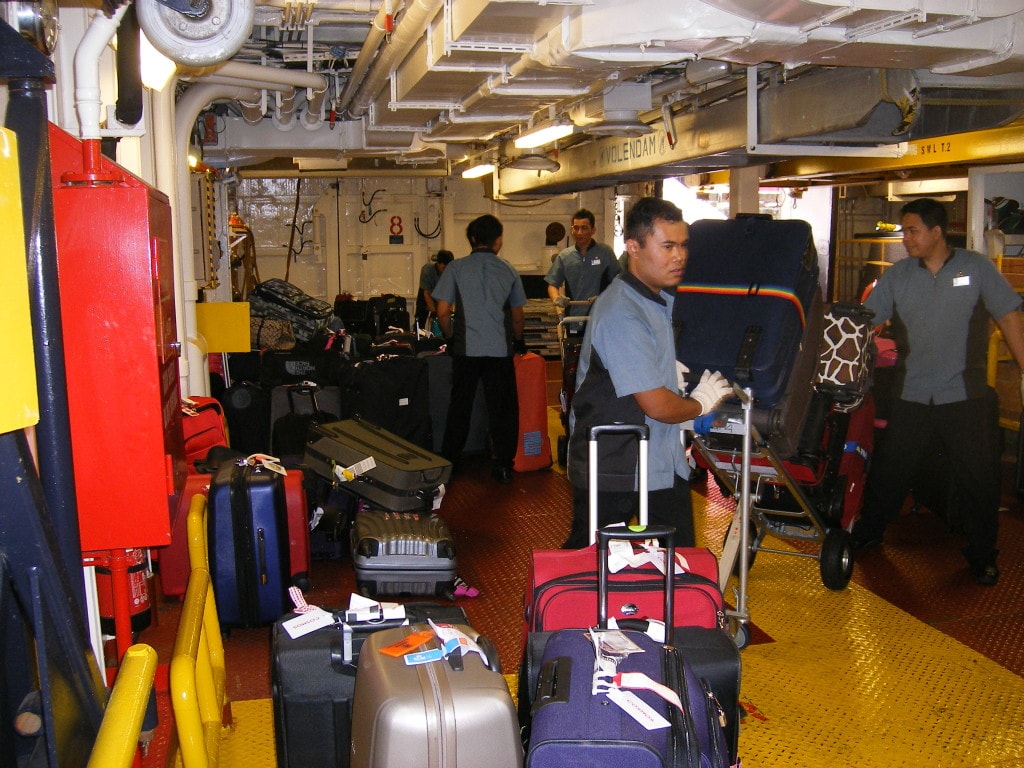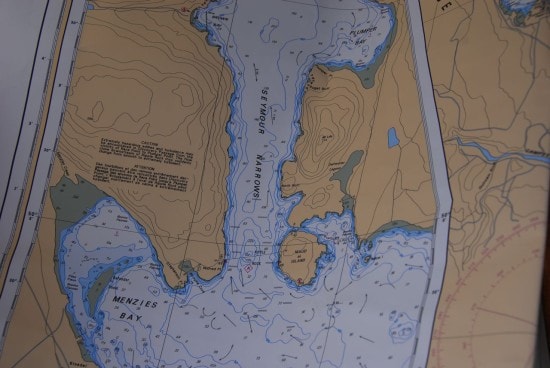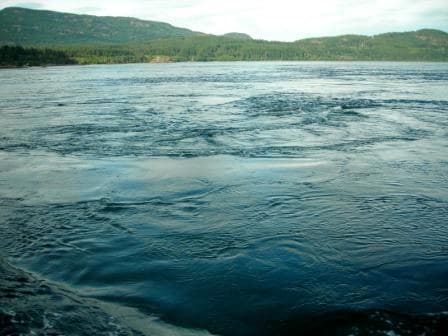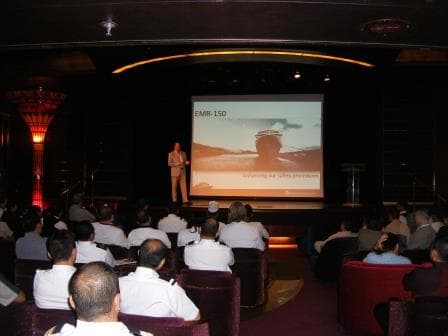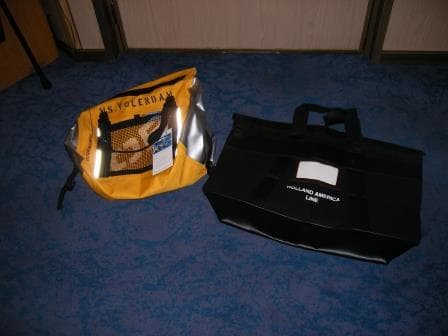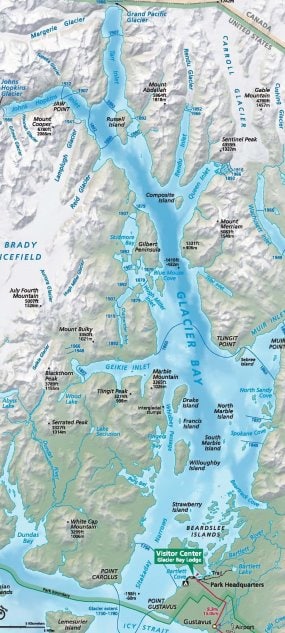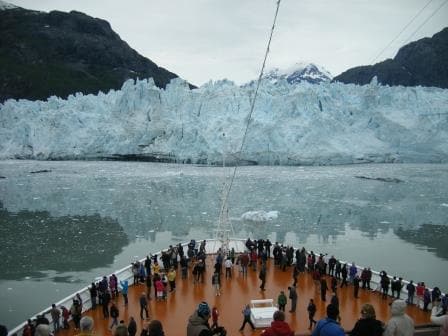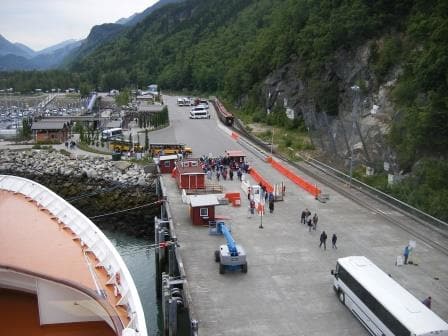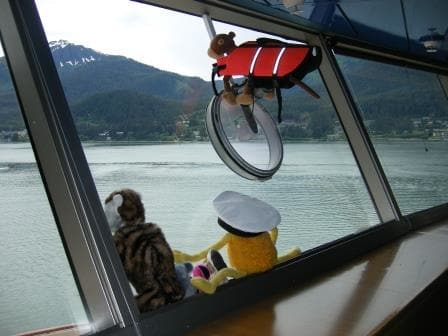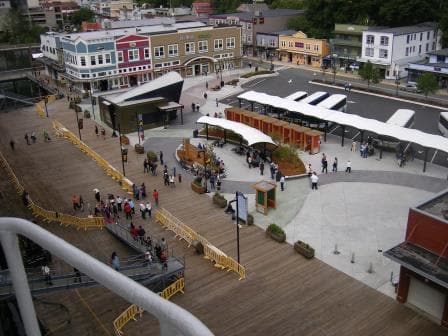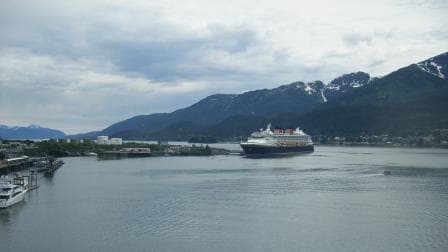In a way it is a pity that we did not arrive early in the morning, as the locals normally have a nice parade for the 4th of July. Many a year did the HAL ships participate as the agent normally organized a Flat Bed truck for that purpose. Quite often the ship won the first prize as well, which is not so amazing as we are a sort of floating circus, cum entertainment vehicle rolled into one. We do have the resources to put up a good show. There were years when my ship was in port on the right days and if it was nice weather then we managed to get the complete Band on the truck plus all the dancing girls. The amazing thing is that the HAL ships always participated and the other cruise lines did not. I never understood why.
Today would have been interesting if all the ships would have participated. Apart from the Volendam, the Pacific Princess (or baby Princess as they seem to call it) and the Disney Wonder were in port. I do not know about Princess, but Disney should have been able to put up something nice. Even if they only would have been able to roll out Mickey Mouse and Cinderella. Success guaranteed.
There are also fireworks but these are the night before. Of those I have seen only one and that was momentous, although for the wrong reason. I do not know how they do it now, but in 1984 they put a barge in the middle of the harbor. Safe against any fall out and a good view all around guaranteed. As City Juneau is on one side of the harbor and the town of Douglas on the other side, this setup worked very well. So all of us on board the Noordam (III), sitting at anchor at the North side of the harbor, had the prime view. The fireworks lasted for about 20 minutes and then everything felt silent, a few seconds only, before the Grand Finale was to occur.
Then the Grand Finale came:…………….. everything on the barge exploded sideways. What was supposed to go up in the air as the final treat, did not go up in the air, but went sideways with an almighty bang. Luckily the barge was from steel, the firework experts coordinated it all from the attached tugboat, so there was no damage and no casualties. I do not know about the locals but the guests on board did not really notice it, they thought that the town of Juneau started the 4th. Of July with a big bang. This time they did.
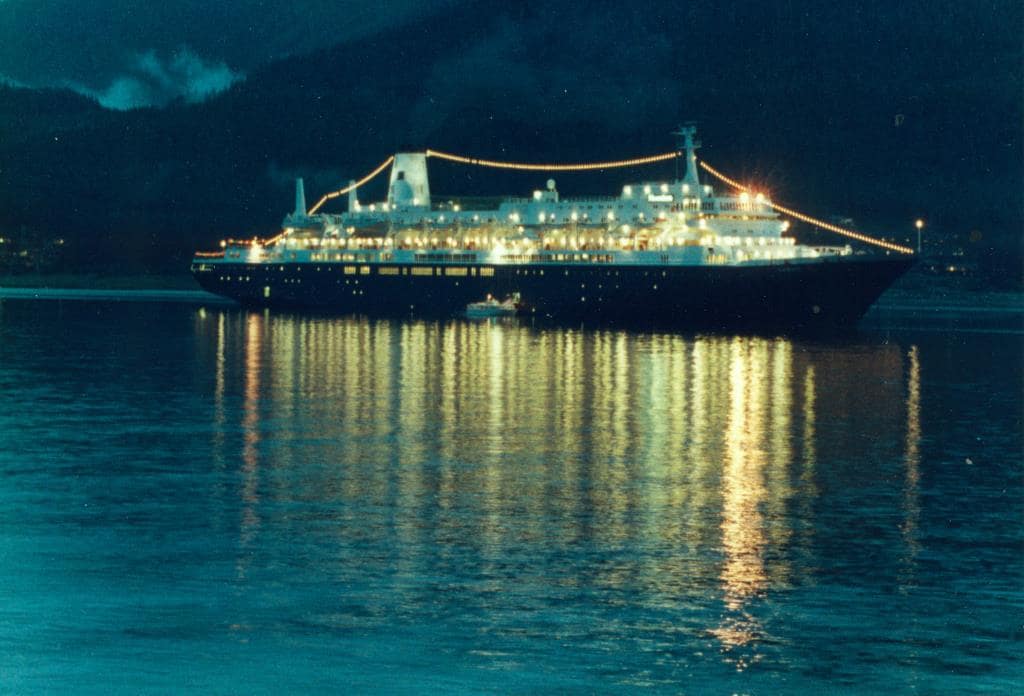
Sweet Memories The ms Noordam (Ill) at anchor in Juneau harbour in 1994. (Photo courtesy Anton Janssen. On board Ships Photographer)
But the Volendam had a 1 pm arrival and that it did, just before 1 pm. The gangway was in and everybody streamed ashore. For the gangway security a 1 pm arrival is the most awkward time as everybody has gone to lunch early and is ready to go by 1 pm. Unfortunately 1400 guests do not fit through the break door all in one go, so it takes awhile. That means that Security really has to urge everybody on otherwise the wait in the staircases will be too long. Today they had the extra challenge that it was raining and that meant that everybody wanted to stop on the gangway threshold to put up their umbrella.
This time I did not mind that it was raining, as part of the roll out of this 3 alarm system that I am on board for to support, we are running training classes for lifeboat handlers. In summer time the rule of thumb in Juneau is no wind when it rains. So today we had rain and thus no wind. Wind makes waves and that makes the return of the lifeboats to be picked up again a lot more difficult. The boats have to be hooked into the falls, and if the boat is going up and down then that is not so easy. Especially not if you have a training class in the boat. So a flat calm sea is appreciated.
We are having these practical classes today, tomorrow in Skagway and then in Ketchikan. Today we had Dining room and supervisors. Tomorrow we have the Cast and dining room and then in Ketchikan, kitchen and Stage Personnel. I am looking forward to tomorrow as with a boatful of dancers, there will not be a dull moment. The weather forecast for tomorrow is very low hanging clouds in the morning, which is also a sort of rain and that means that there will also be no wind. Exactly what I need.
